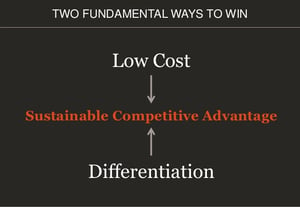 How do strategies differ?
How do strategies differ?
Michael Porter in Competitive Strategy shared just two ways to win:
- operate with sustainable lower costs, or
- differentiate by offering a significantly better product or service.
How does a Low-Cost strategy distinguish itself from a Differentiation Playing to Win Strategy?
Pay attention to this example from Playing to Win if you’d like to learn on how more to achieve either.
 Here’s an example for a company we’ll call the JJS Cleaning Company providing two Playing to Win Strategy Cascades, one with the Low-Cost STRATEGY, the other with a Differentiation STRATEGY. Both company examples are in the Chicago area.
Here’s an example for a company we’ll call the JJS Cleaning Company providing two Playing to Win Strategy Cascades, one with the Low-Cost STRATEGY, the other with a Differentiation STRATEGY. Both company examples are in the Chicago area.
DIFFERENTIATION STRATEGY
First, we’ll share the company choosing to compete on differentiation.
Its aspiration is to win with its customers, as measured by satisfaction, loyalty, and repeat business.
Through these graphics (AG Lafley, Roger L Martin, and Jennifer Riel) you can see the strategy cascade for JSS Cleaning’s Winning Aspiration in a Differentiation Strategy: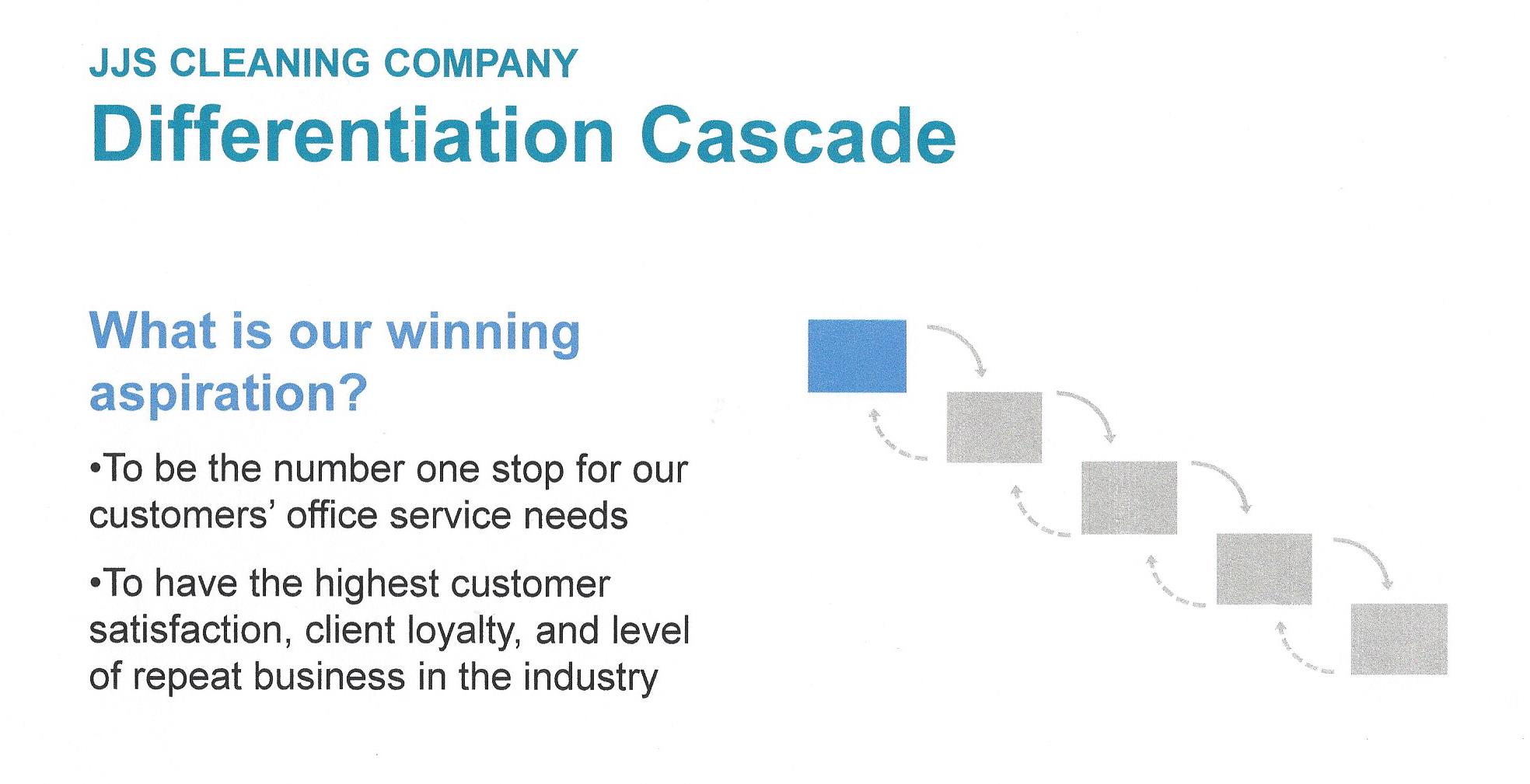
Where to Play:
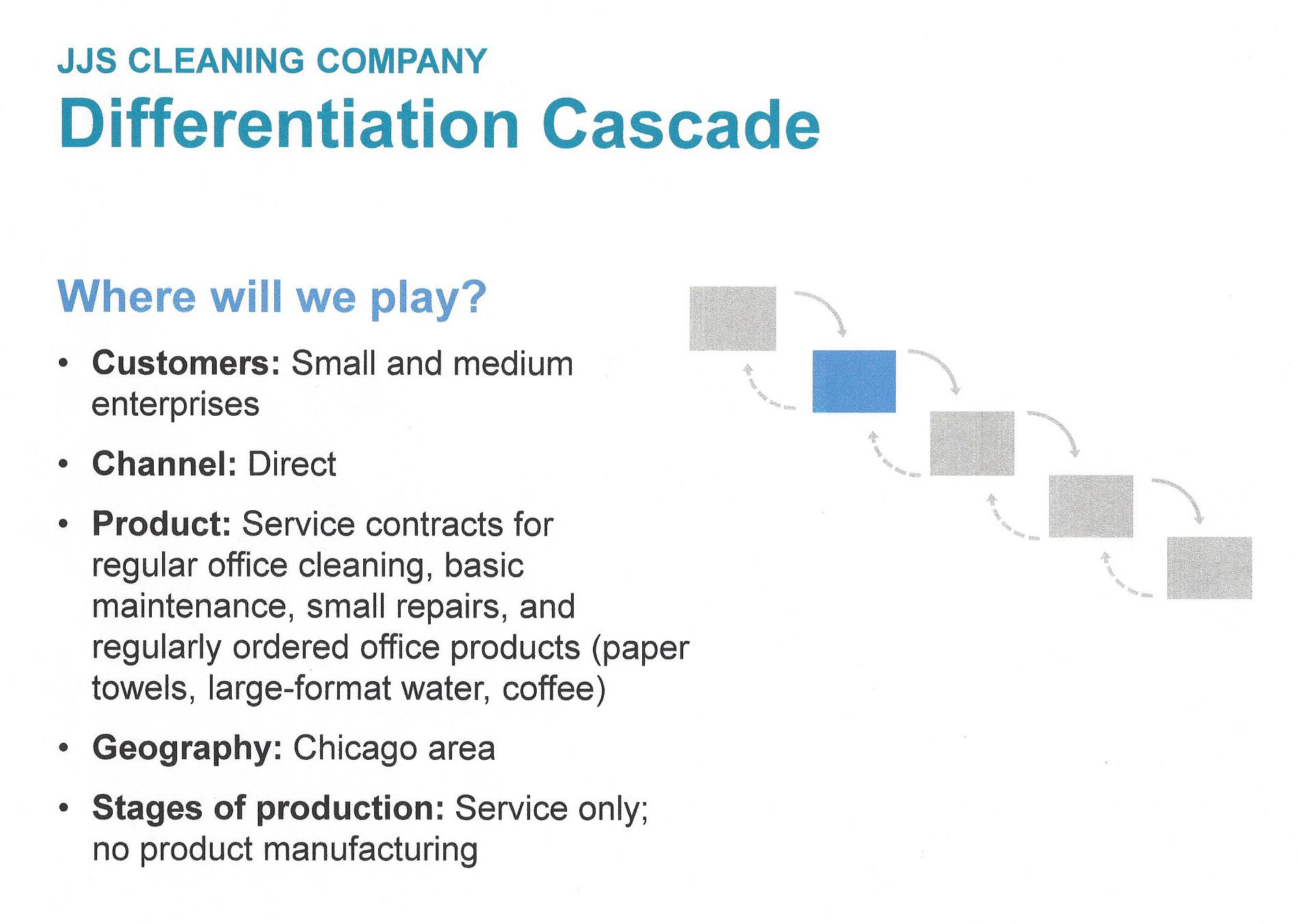
How to Win 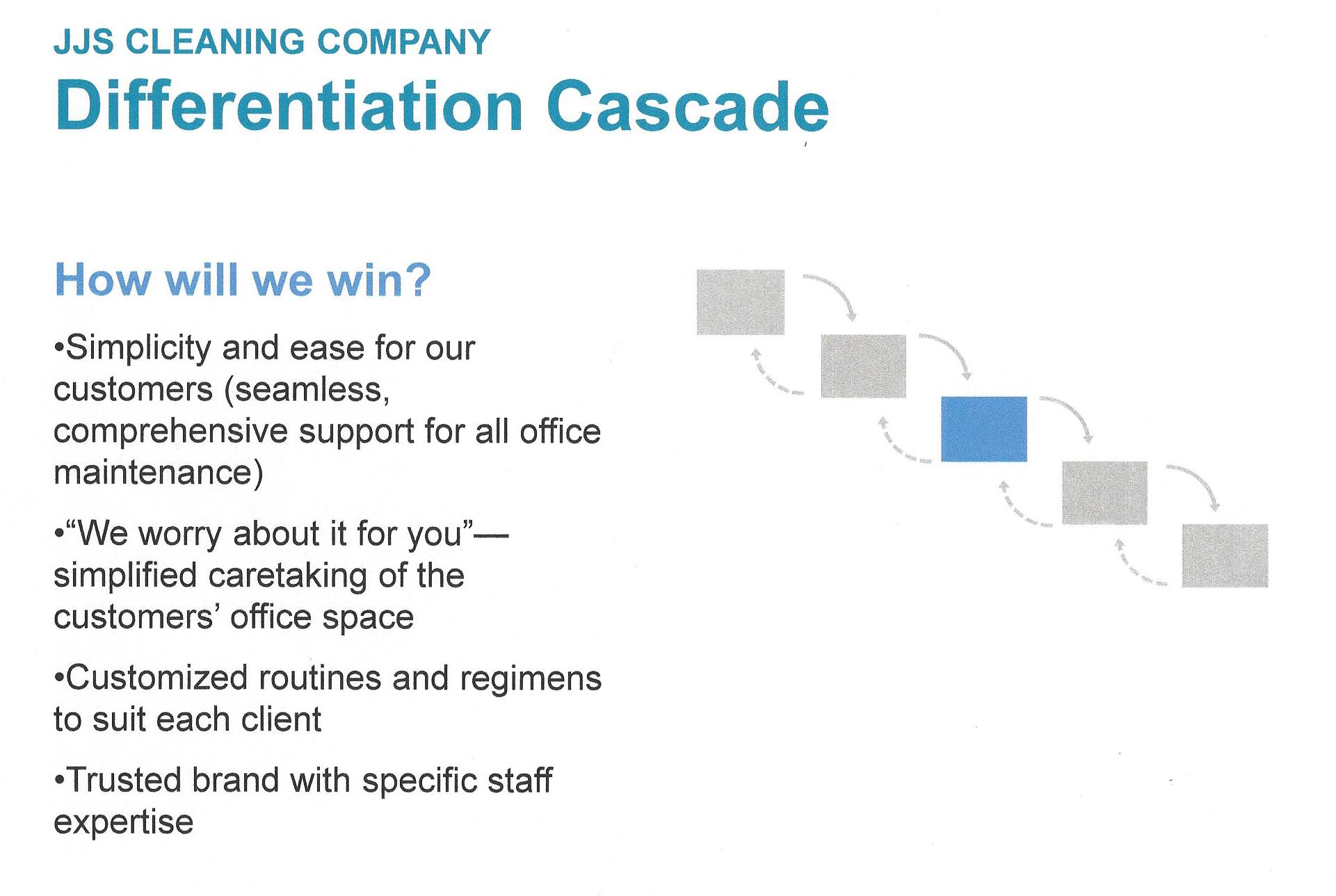
Core Capabilities
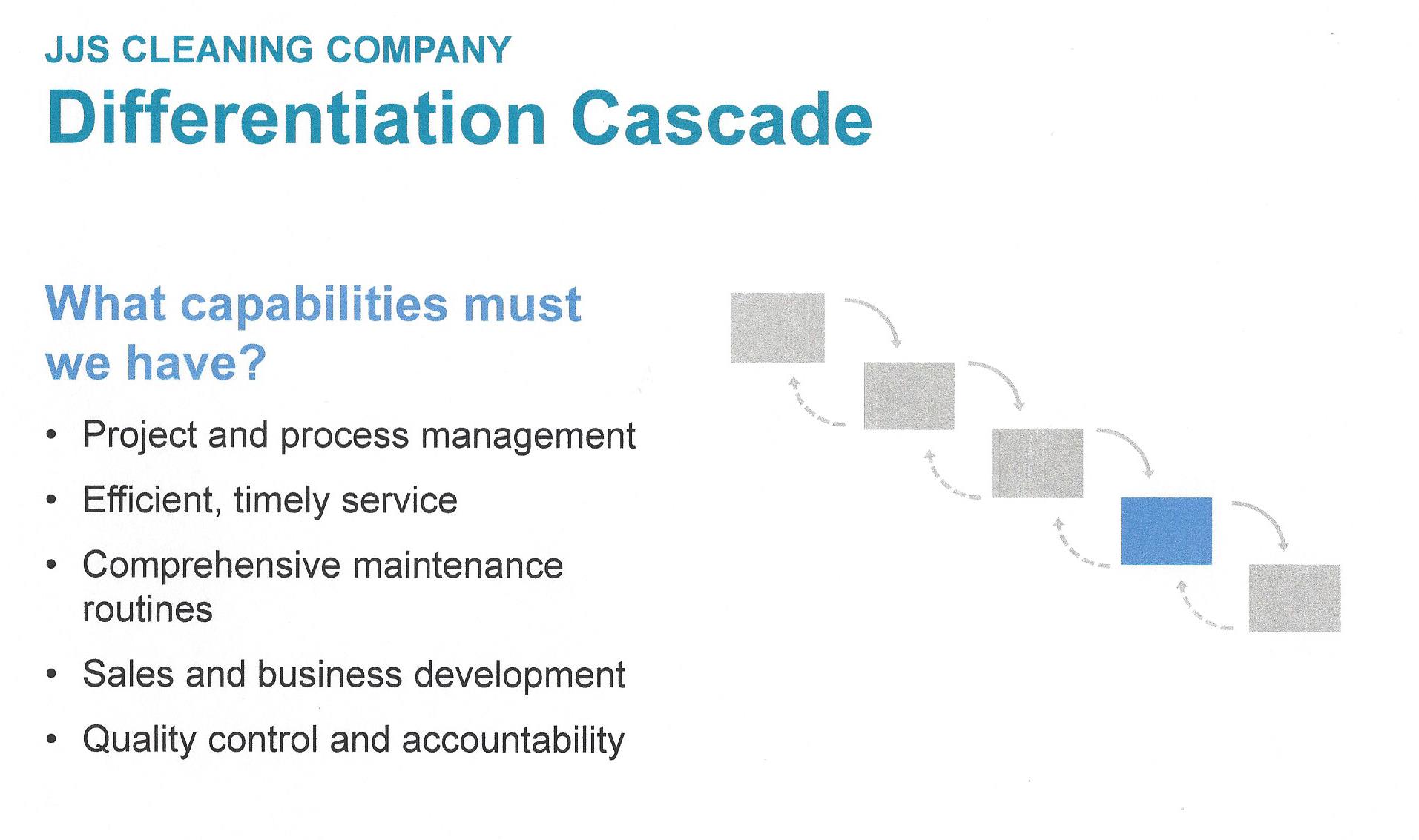
Management Systems
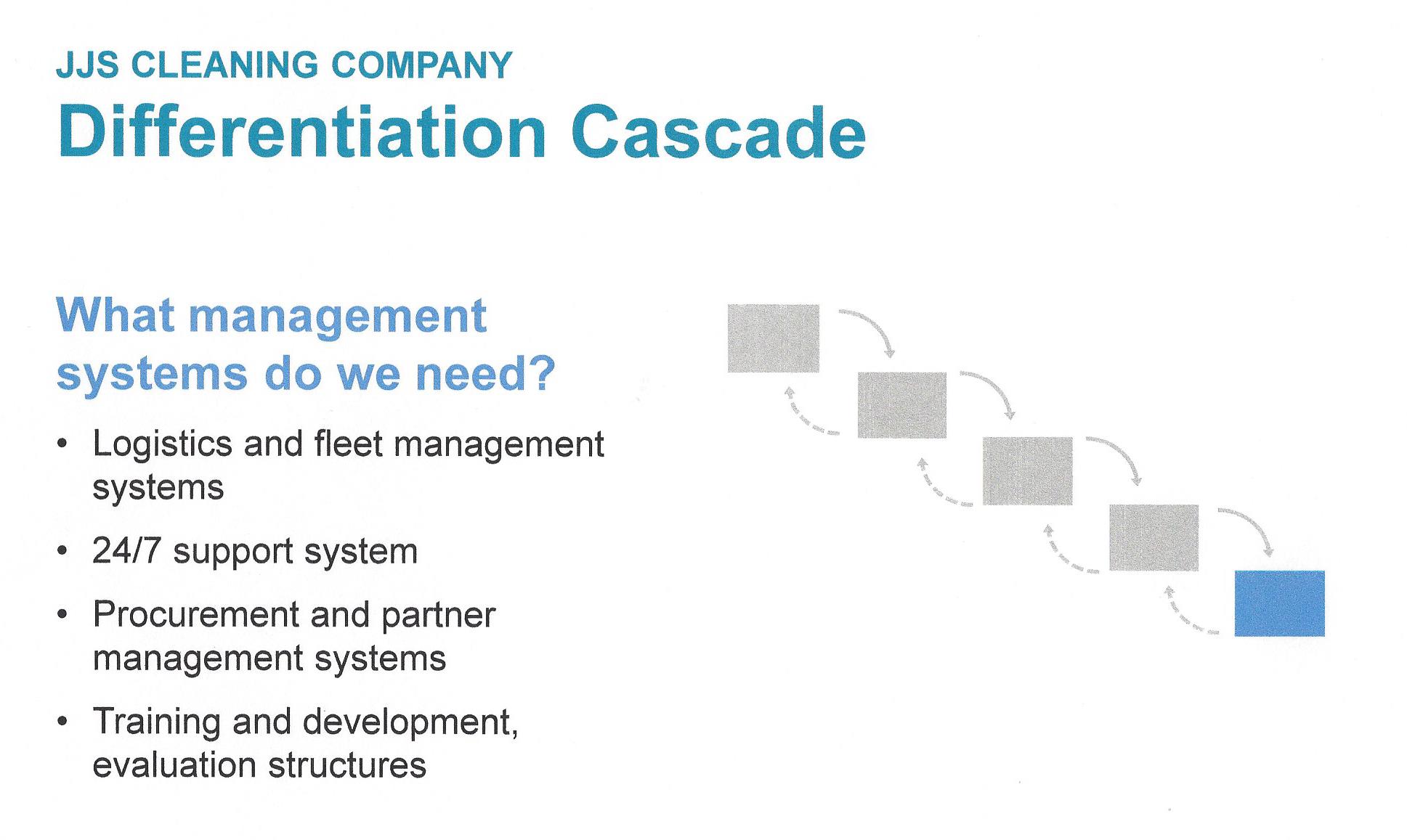
LOW-COST STRATEGY
Now let’s look at what the cascade would look like for the same company if it chose a low-cost strategy.
The company plans to have leading market share and to use scale to create cost advantages. Winning means having the highest levels of repeat business.
Here’s the same company’s Low-Cost Winning Aspiration: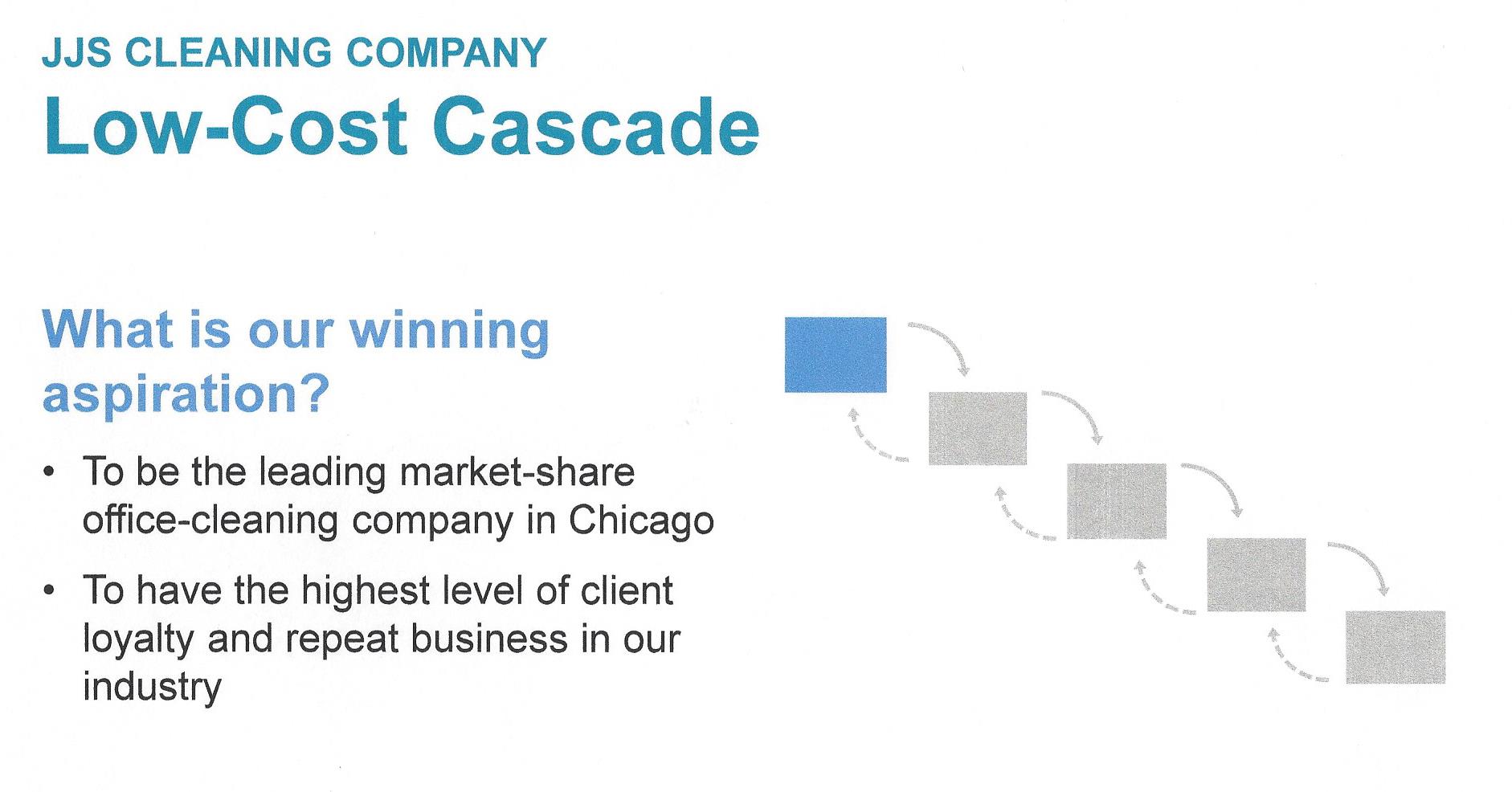
Where to Play:
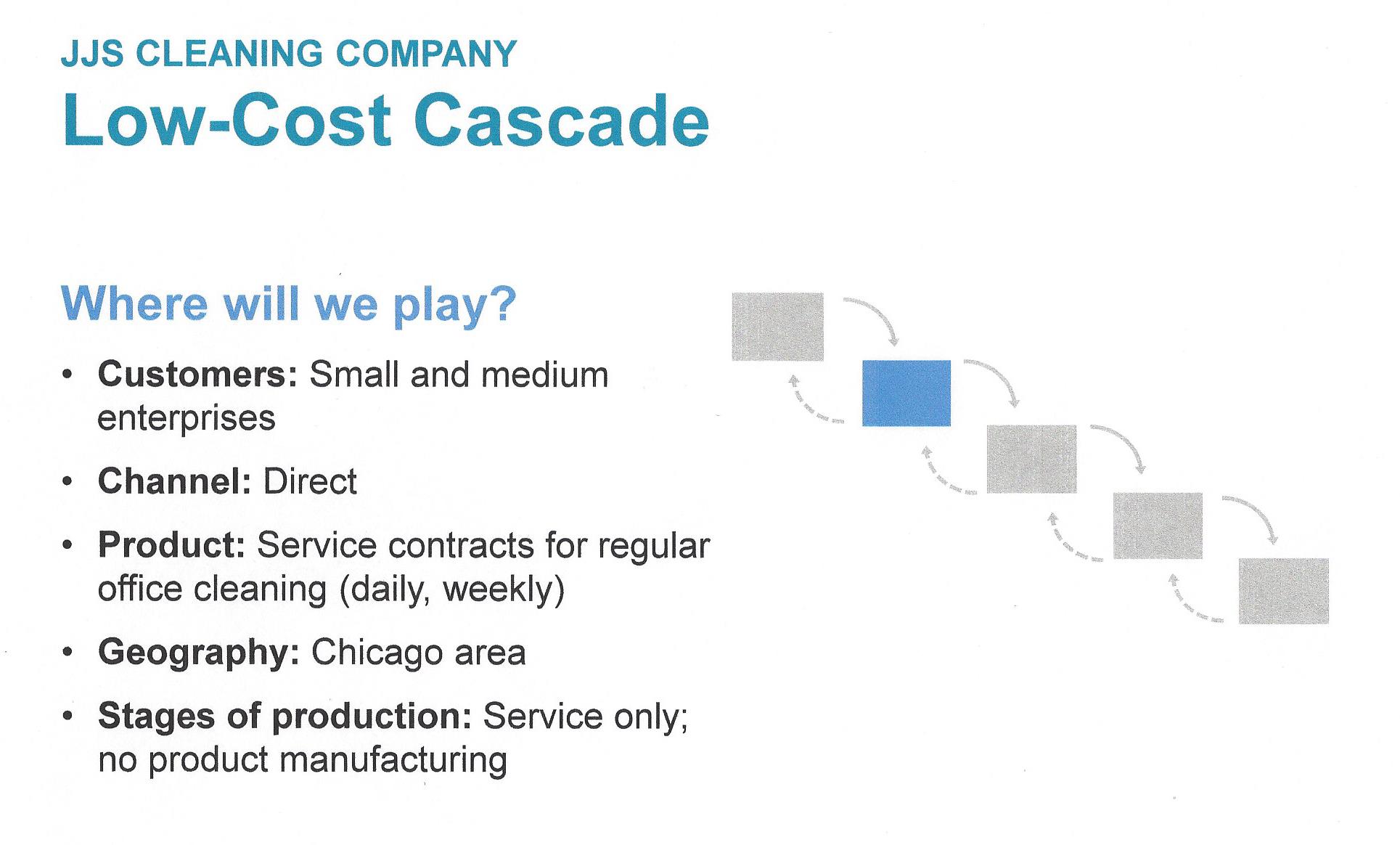
How to Win
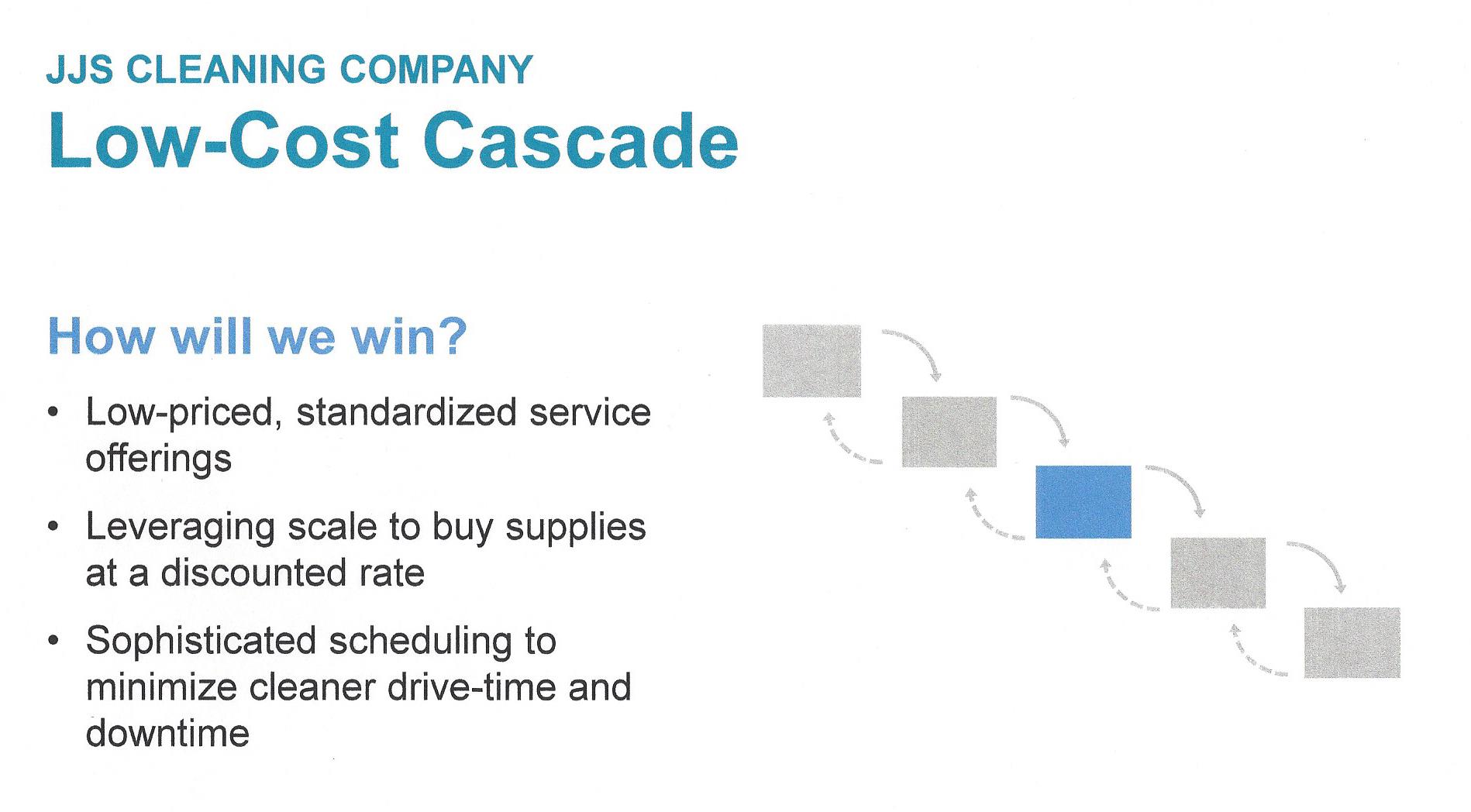
Core Capabilities
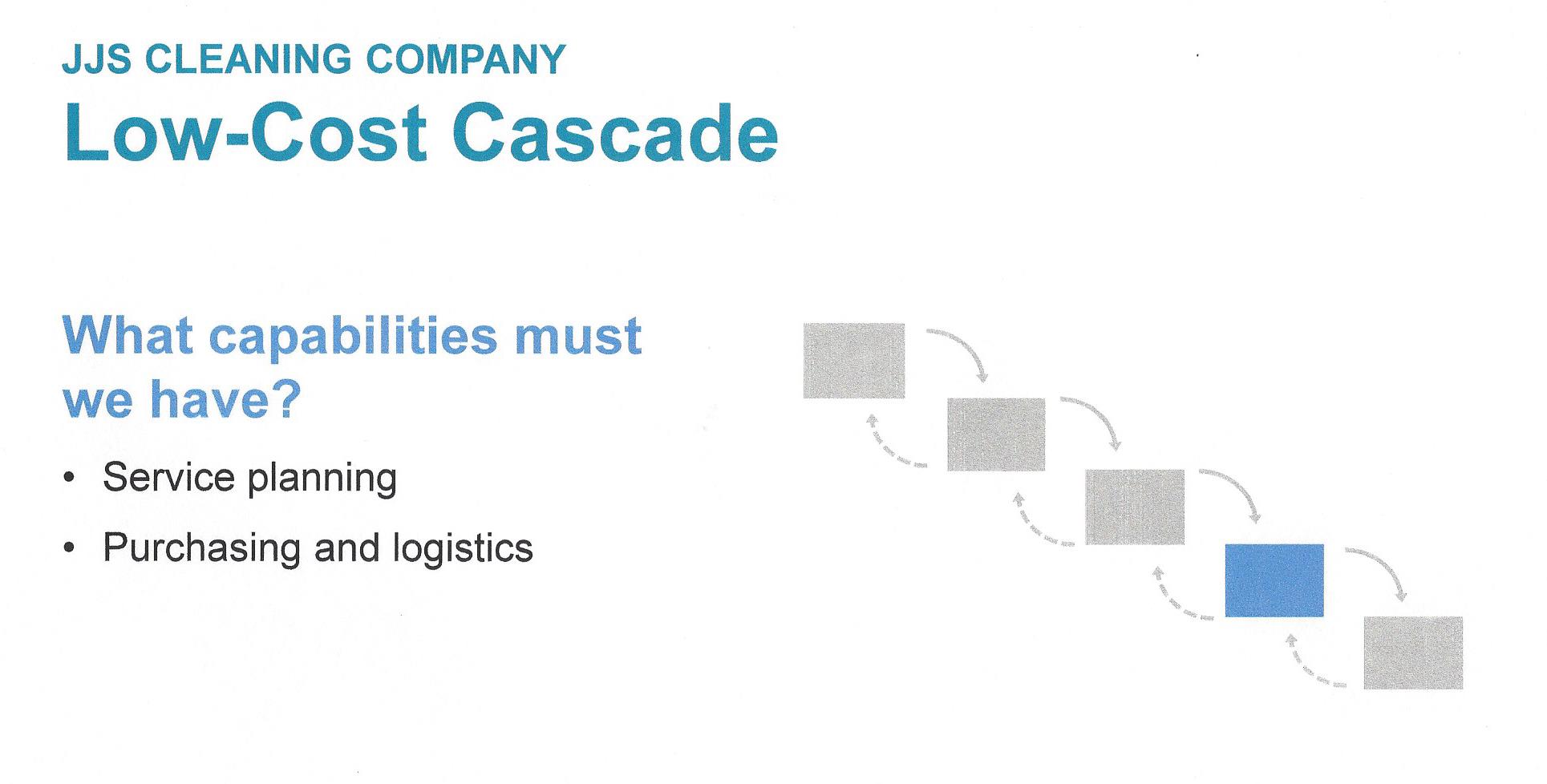
Management Systems
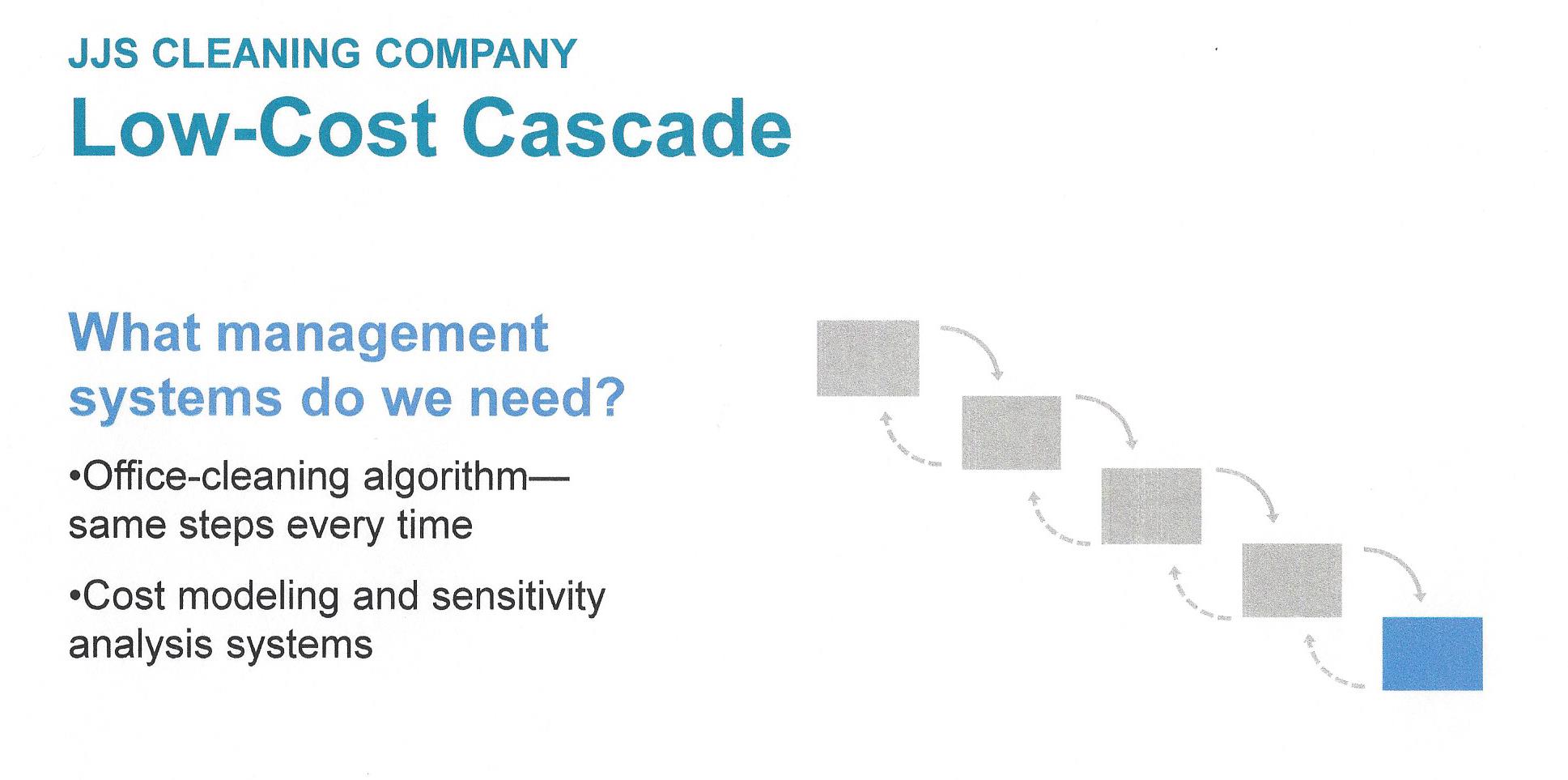
COMPARE LOW-COST TO DIFFERENTIATION STRATEGY CASCADE
Compare the Differentiating Strategy Cascade to the Low-Cost Strategy Cascade, side by side:
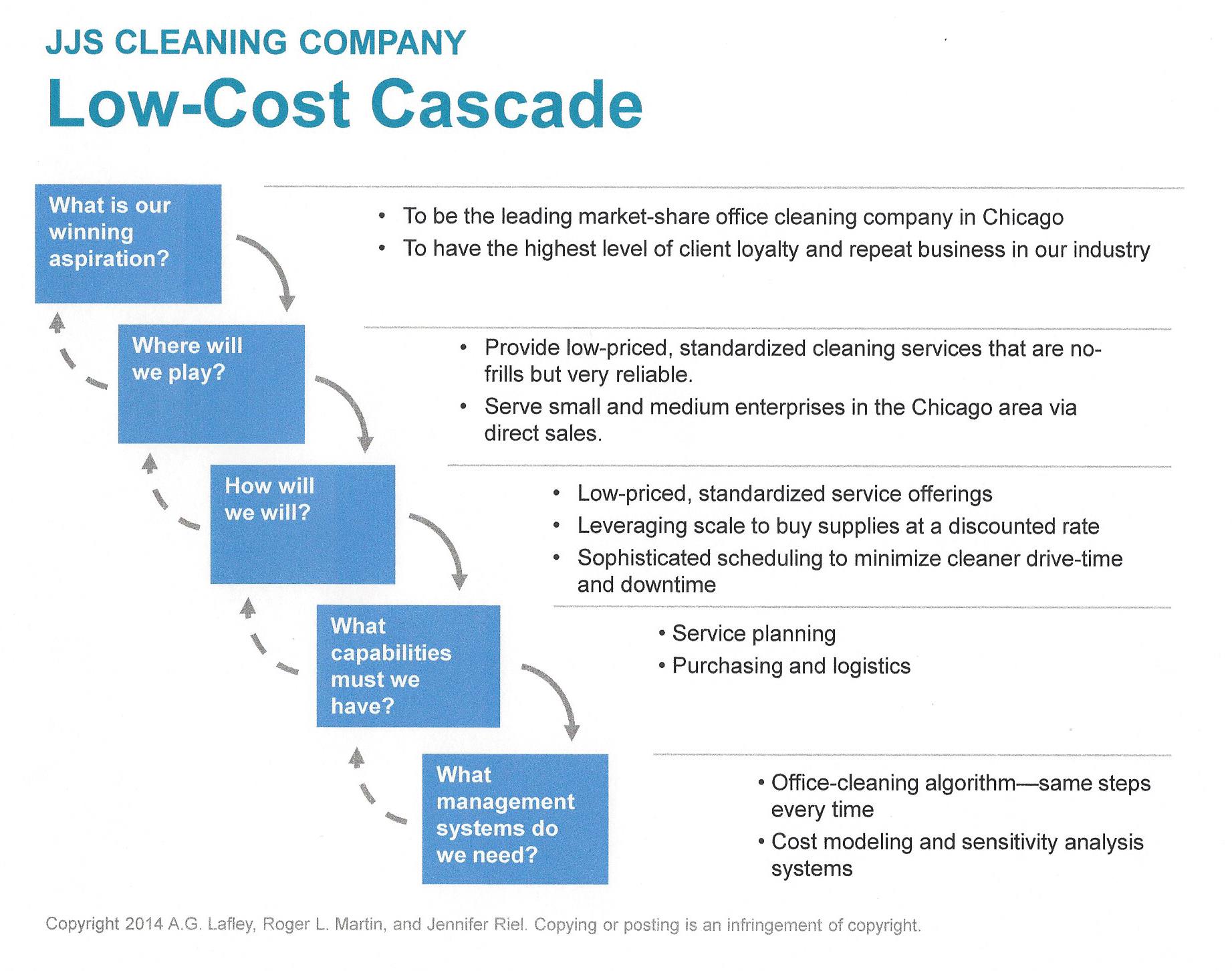
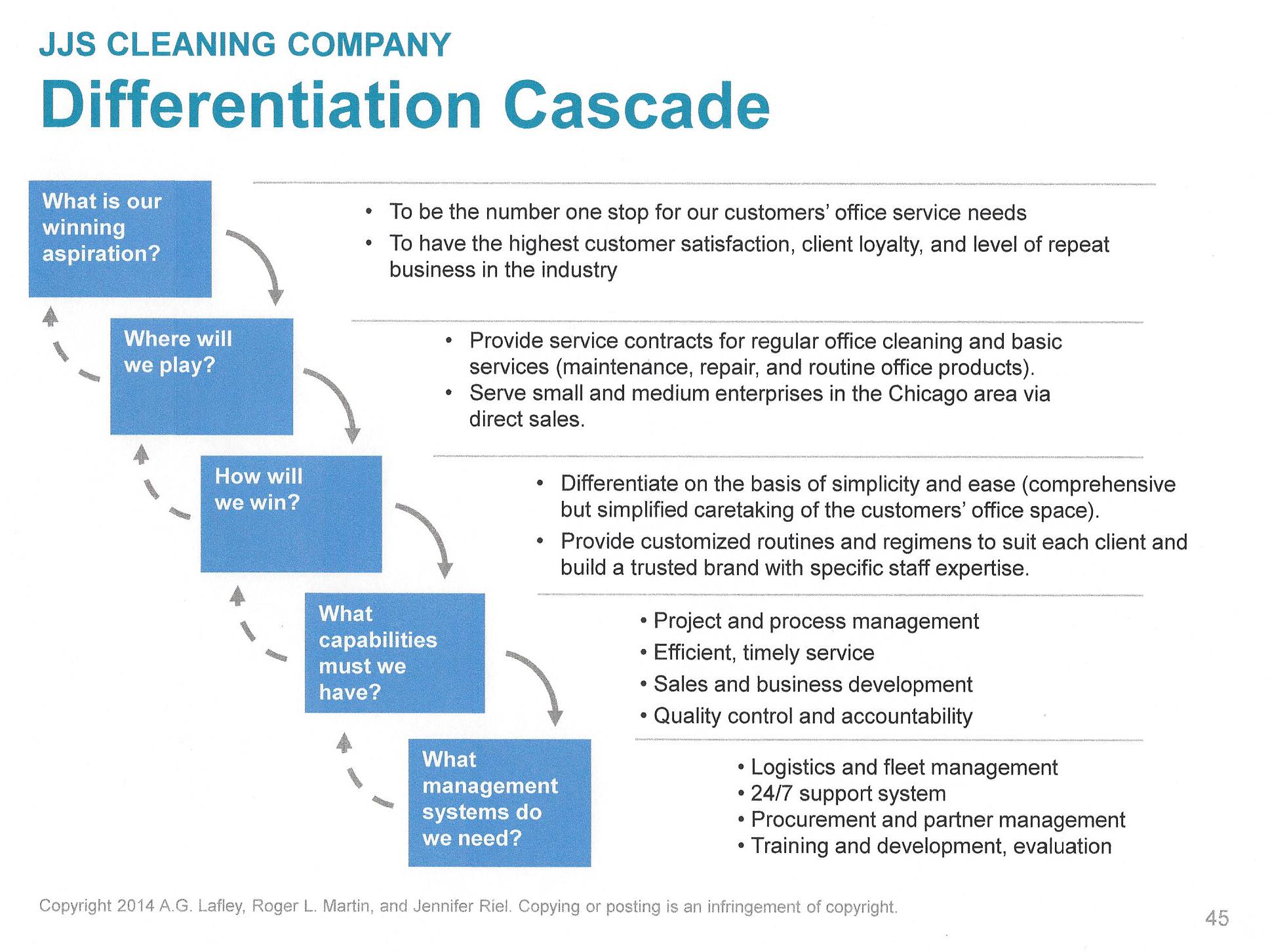
Can you spot the differences in each’s 5 Steps?
What’s the difference in their Winning Aspiration? Both want the highest level of client loyalty and repeat business; however, the Differentiation Strategy also includes the highest level of customer satisfaction.
In Where to Play, both focus on small to medium enterprises in Chicago, while Low Cost is forefront along with standardized cleaning services. Differentiation offers more services.
In How to Win, you’ll find the greatest variance in how Low-Cost differs from Differentiation.
In Capabilities, again Differentiation provides many more Capabilities.
The framework of Management Systems in Differentiation once again is much more complex and varied in order to provide the differentiating qualities necessary for this strategy to be effective.
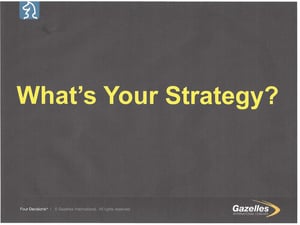 Building your strategy, whether Low Cost or Differentiation requires time, patience, and the ability to think through each step in the strategy cascade in order to develop the best strategy for you to win.
Building your strategy, whether Low Cost or Differentiation requires time, patience, and the ability to think through each step in the strategy cascade in order to develop the best strategy for you to win.
Whatever your current strategy is, it’s important you know each of these 5 steps.
Is your strategy Low Cost or Differentiation?
Are you winning?
How have you measured winning?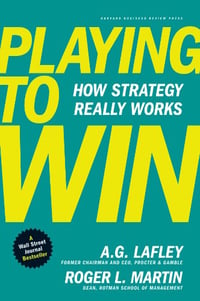
If you’re not currently winning, isn’t it time to look at your strategy, determine your most pressing strategic issue, and define your core strategic problem?
That’s the next step once you’ve identified your current strategy.
Once you’ve identified your current strategy, you should frame a strategic choice and generate several possibilities, then draft a strategy cascade for each of your choices.
By reverse engineering each of your strategy choices you should the specify conditions for each of the possible strategies that must be true for the strategy to be successful.
Once you’ve identified the barriers, you test for them. The choice that passes your test best should provide the greatest opportunity for you to Win.
How do you test your choices? We’ll discuss an example from P&G in our next blog.
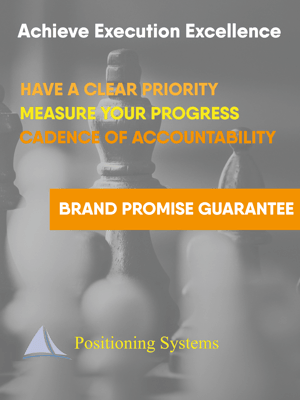 Growth demands Strategic Discipline.
Growth demands Strategic Discipline.
To build an enduring great organization, requires disciplined people, disciplined thought, disciplined action, to produce superior results, and make a distinctive impact in the world.
Discipline sustains momentum, over a long period of time, laying the foundations for lasting endurance.
A winning habit starts with 3 Strategic Disciplines: Priority, Metrics and Meeting Rhythms. Forecasting, accountability, individual, and team performance improve dramatically.-2.jpg?width=300&name=3%20Disciplines%20of%20Execution%20(Strategic%20Discipline)-2.jpg)
Meeting Rhythms achieve a disciplined focus on performance metrics to drive growth.
Let Positioning Systems help your business achieve these outcomes on the Four most Important Decisions your business faces:
|
DECISION |
RESULT/OUTCOME |
|
PEOPLE |
|
|
STRATEGY |
|
|
EXECUTION |
|
|
CASH |
|
Positioning Systems helps mid-sized ($5M - $250M) business Scale-UP. We align your business to focus on Your One Thing! Contact dwick@positioningsystems.com to Scale Up your business! Take our Four Decisions Needs Assessment to discover how your business measures against other Scaled Up companies. We’ll contact you.
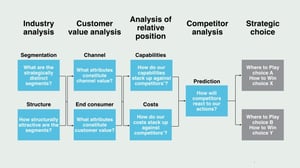 NEXT BLOG – THE BEST STRATEGY QUESTION
NEXT BLOG – THE BEST STRATEGY QUESTION
When it comes to strategy, often arguments ensue. One person, either the strongest personality or the highest level of authority and power in an organization wins. Is this the best way to determine your strategy? A.G. Lafley discovered a process to get everyone working together to develop strategy with just one Question. That question next blog.






.jpeg?width=150&height=135&name=Hand%20with%20marker%20writing%20the%20question%20Whats%20Next_%20(1).jpeg)

